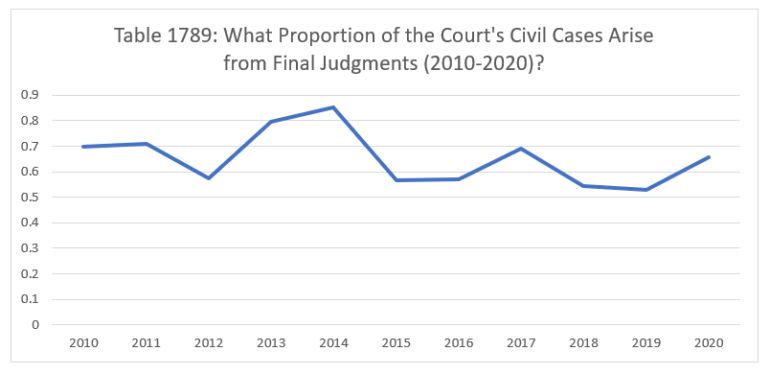Today, we're winding up our three-week trip through the data, asking whether the Supreme Court prefers to review final judgments. First up – civil cases for the years 2010 to 2020.
As shown in Table 1789, the share of the Court's civil docket accounted for by final judgments has dipped between ten and twenty percentage points over the past eleven years. In 2010, 69.7% of the civil docket arose from final judgments. That rose to 85.19% by 2014. It then immediately fell to only 56.82% in 2015. In 2017, the share rebounded to 69.23%, but was then back to 54.55% in 2018 and 52.94% in 2019 before rising to 65.63% in 2020.
Across the entire thirty-one years since 1990, the Supreme Court has decided 1,451 civil cases. Eight hundred sixty-four of those cases have arisen from final judgments for a share of only 59.55% of the civil docket.

So does the Supreme Court prefer to review final judgments in civil cases? The data since 1990 says no.
Image courtesy of Flickr by Adam Moss (no changes).
The content of this article is intended to provide a general guide to the subject matter. Specialist advice should be sought about your specific circumstances.
